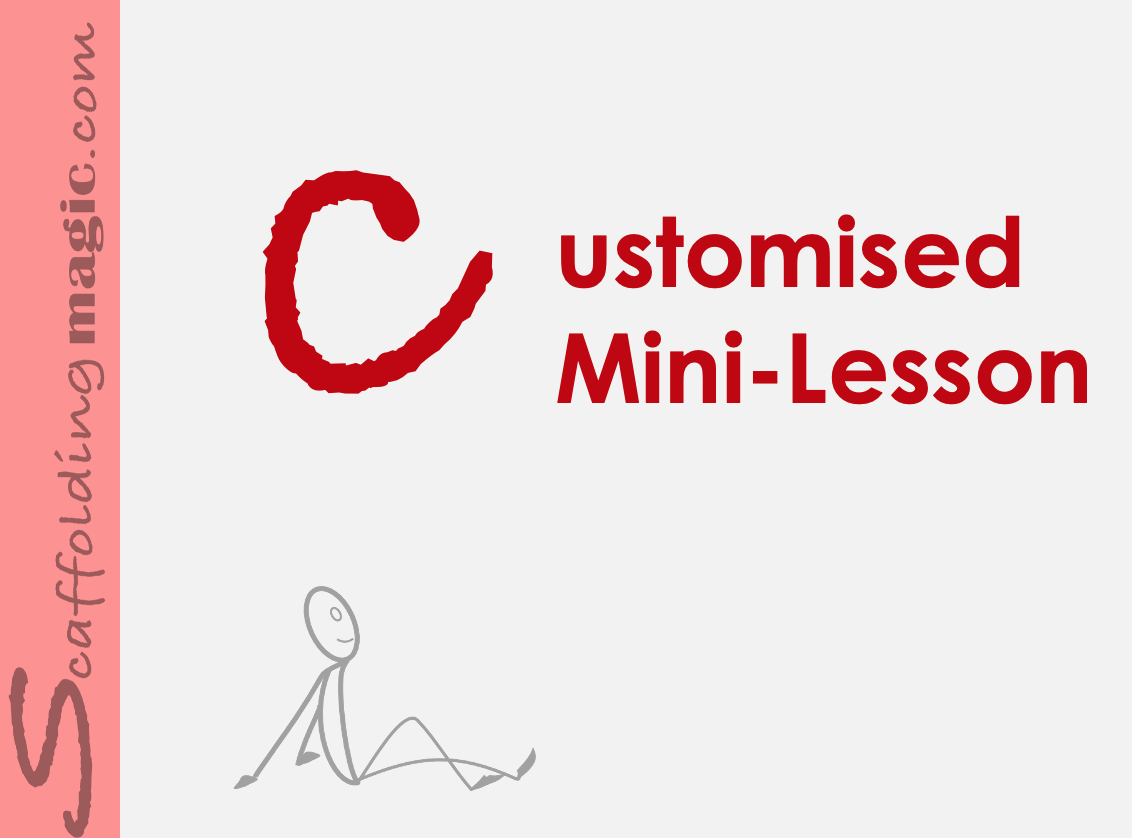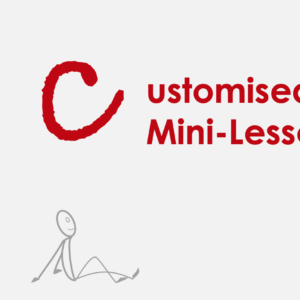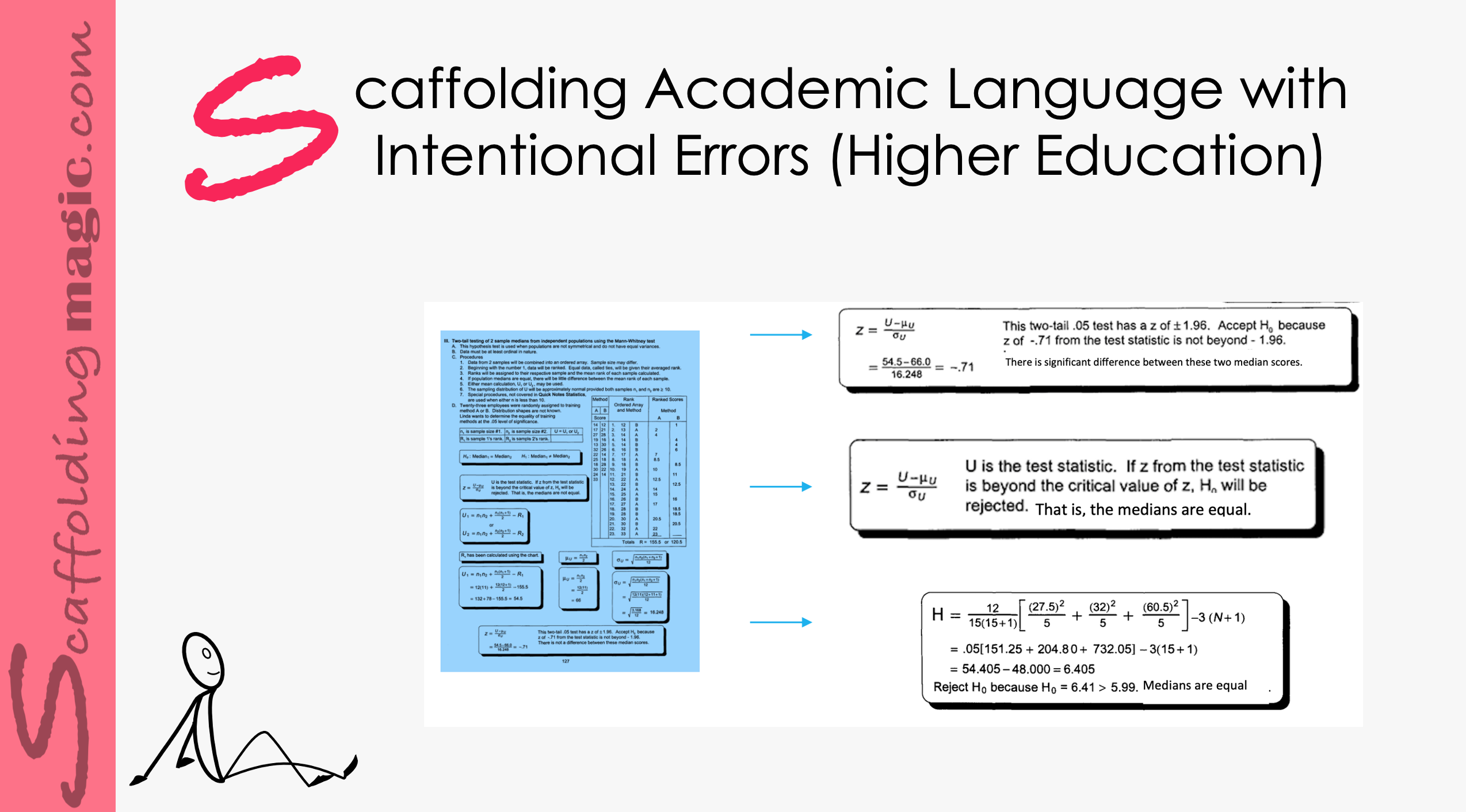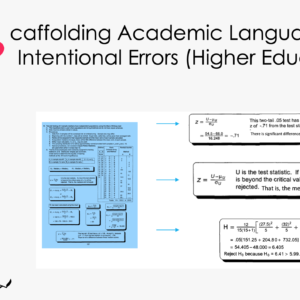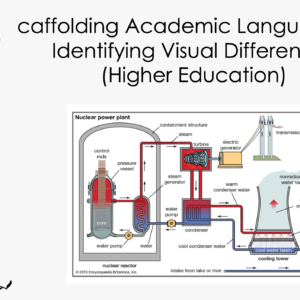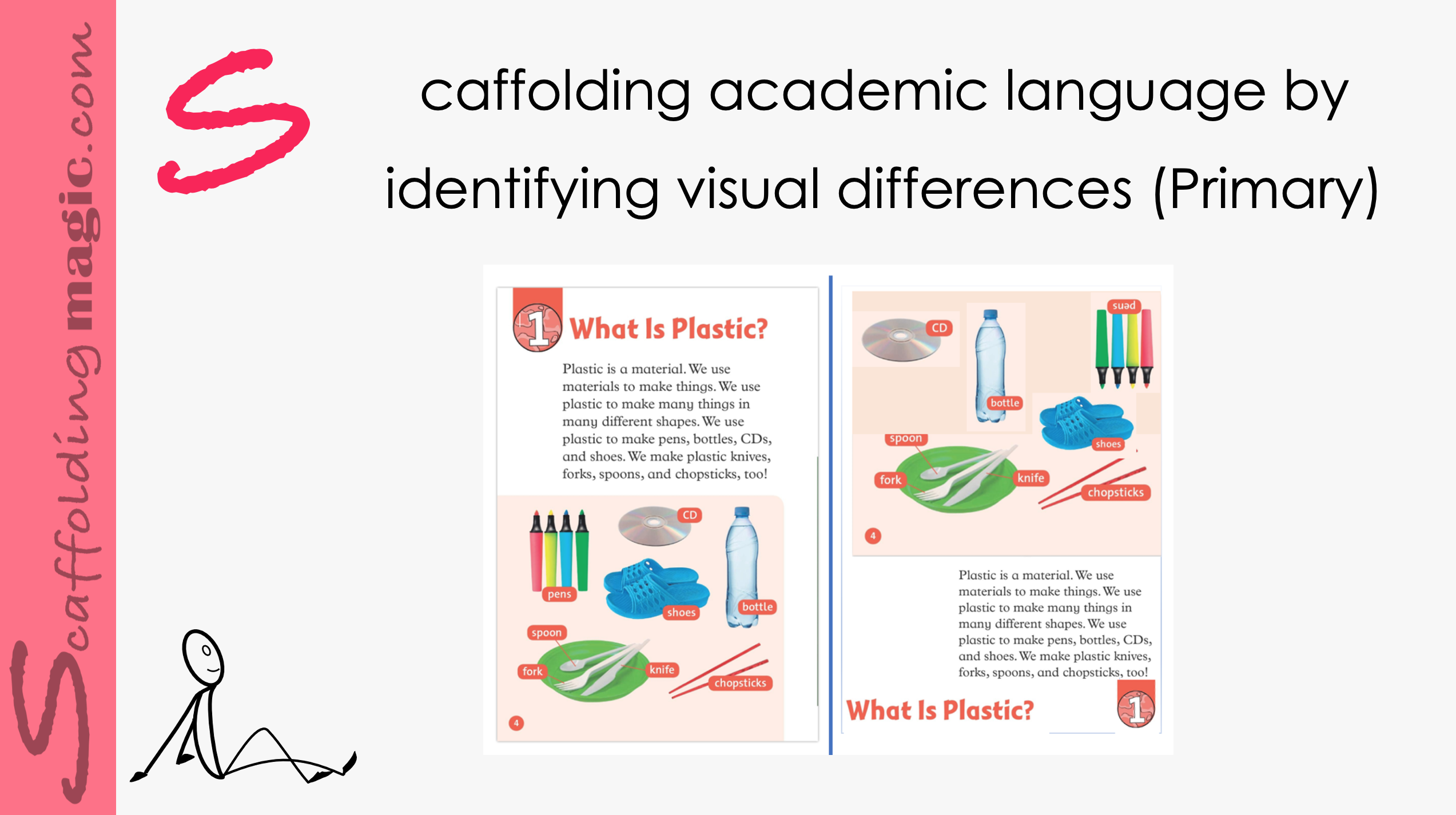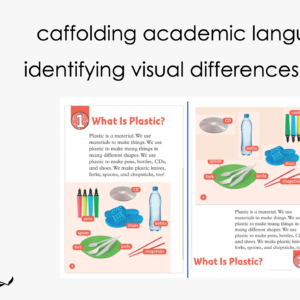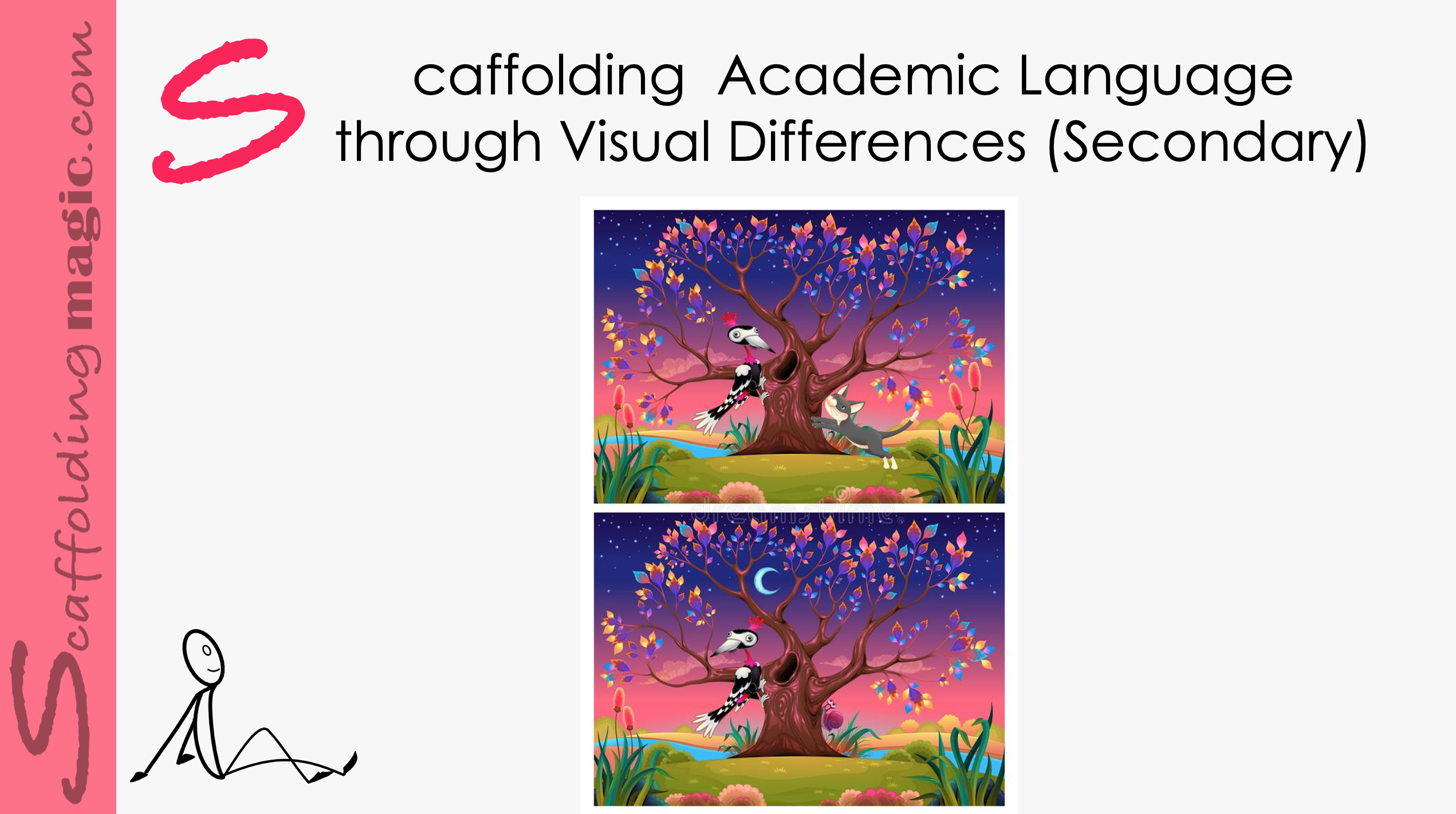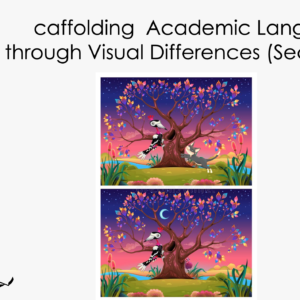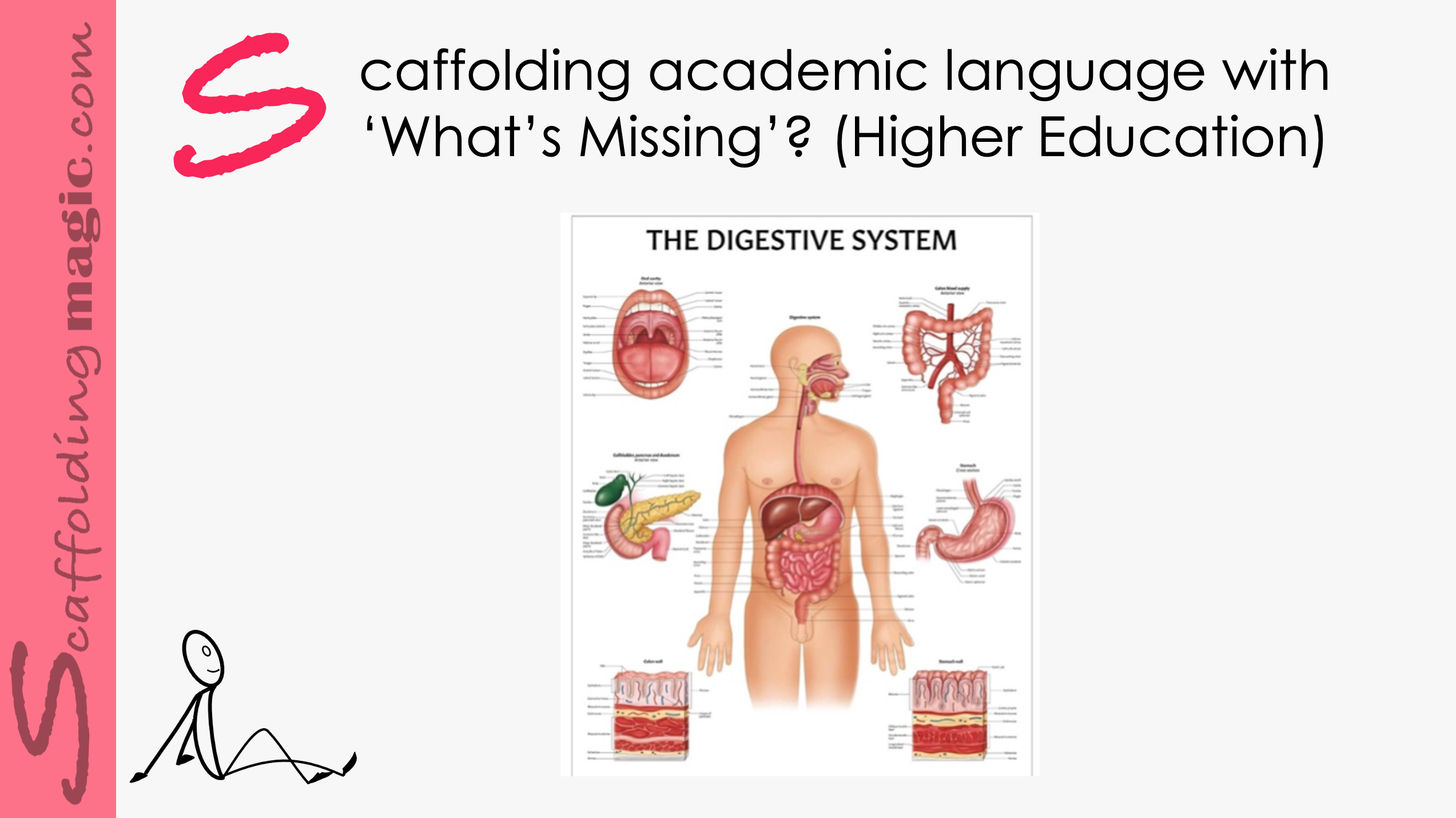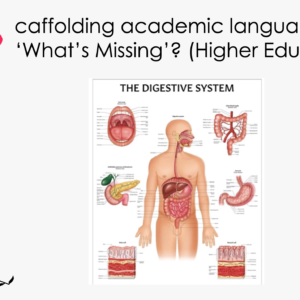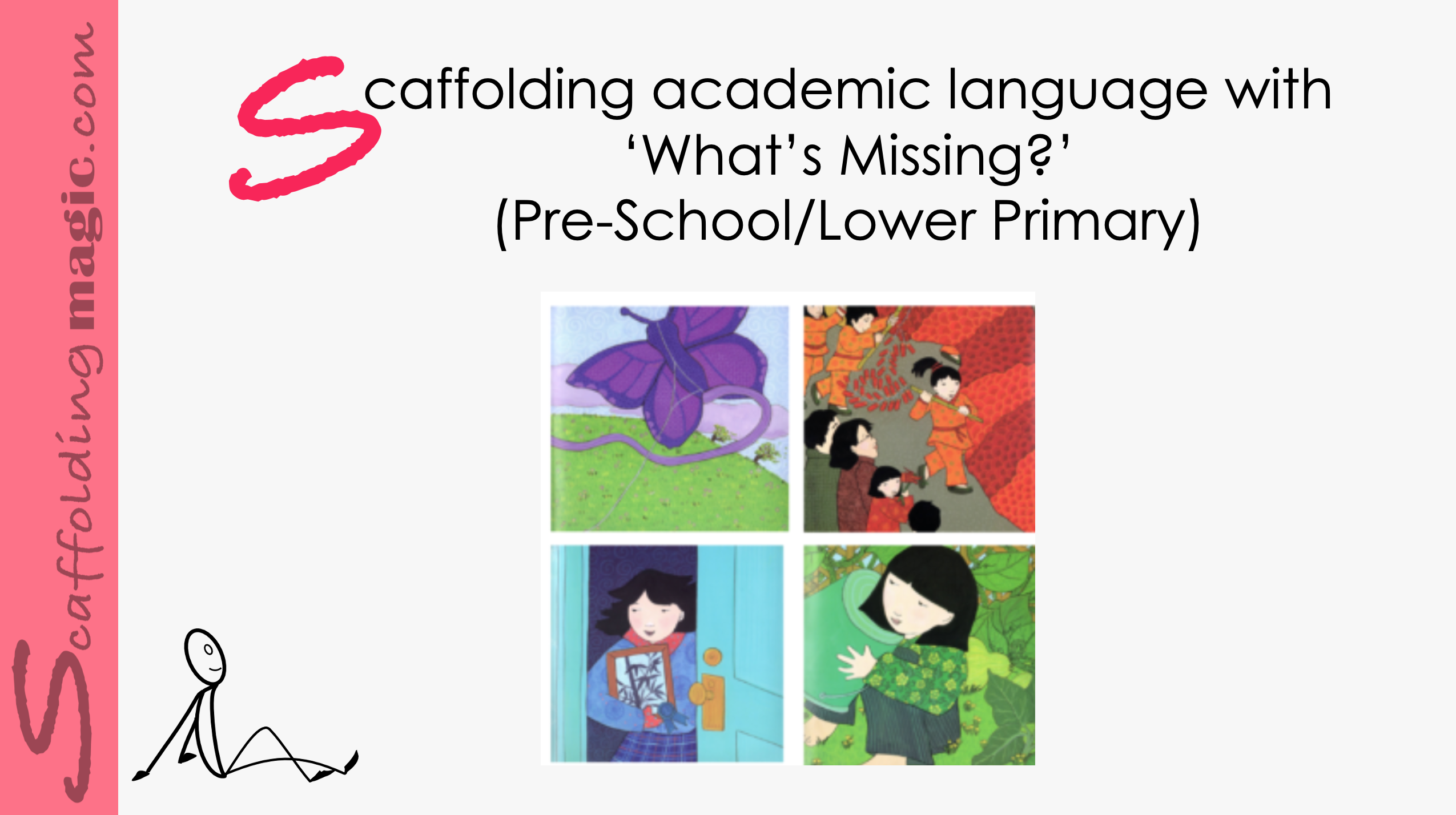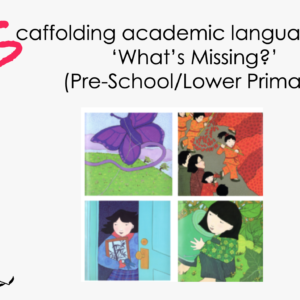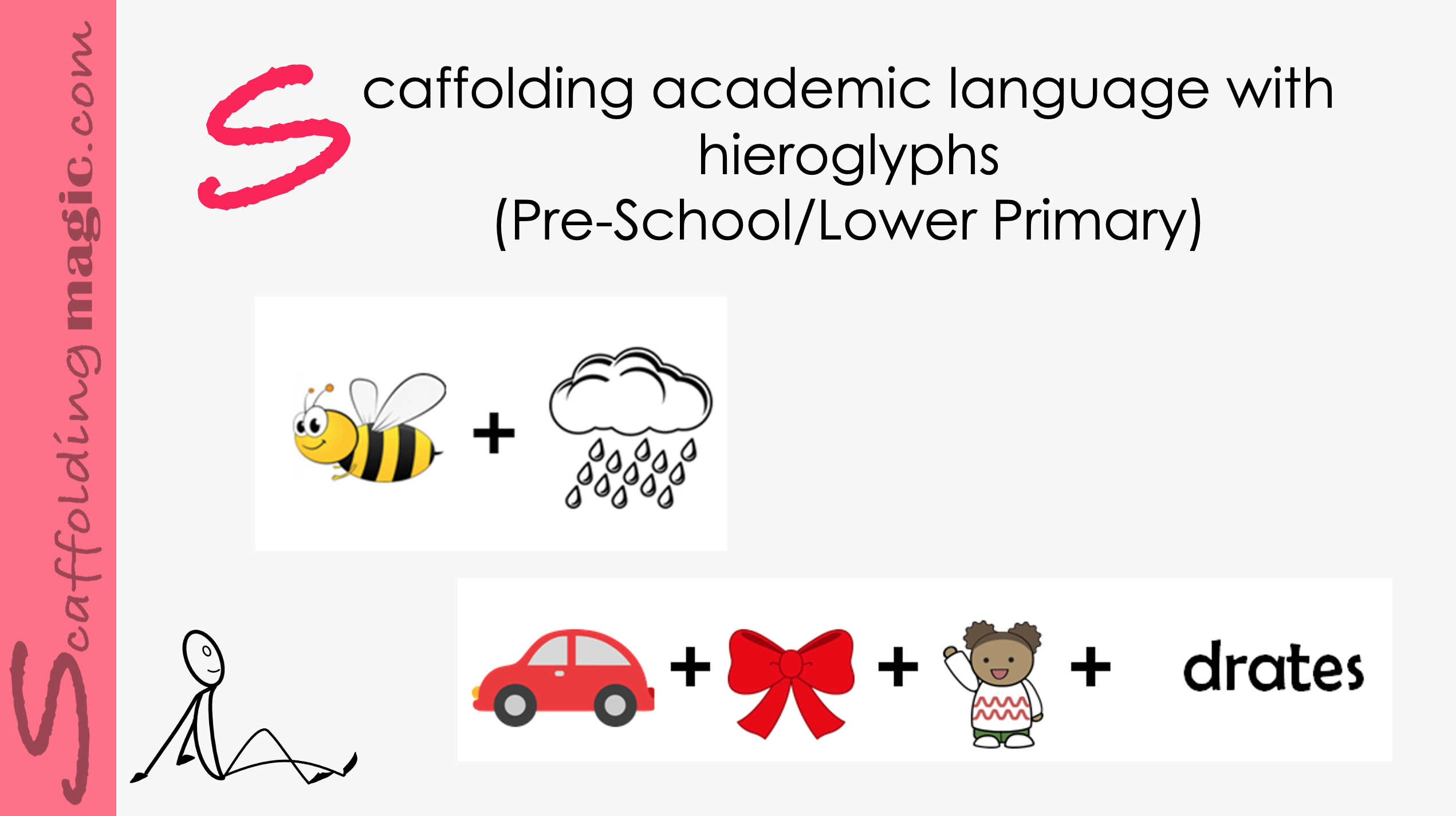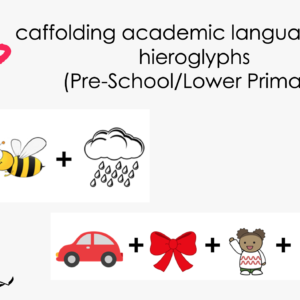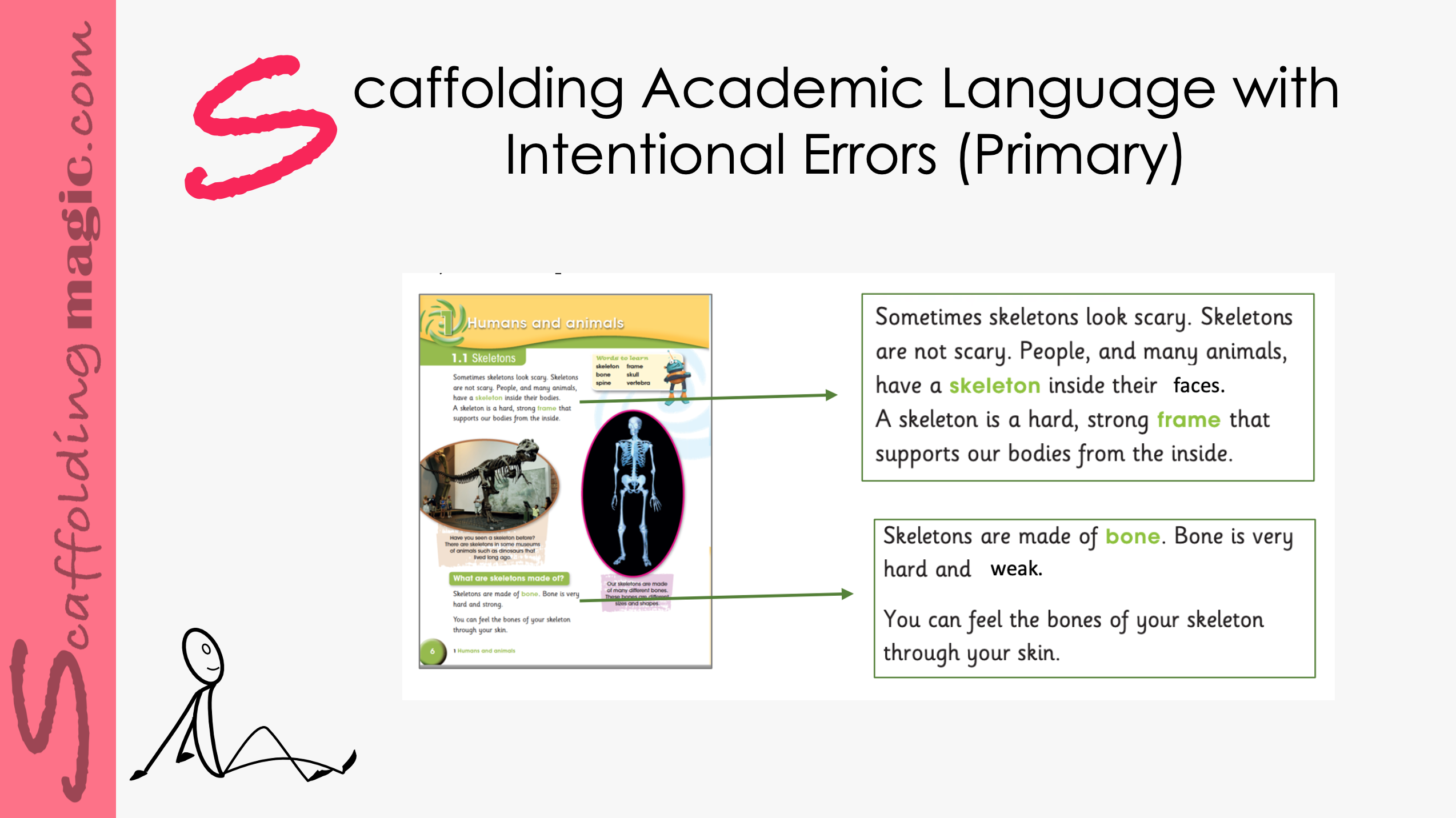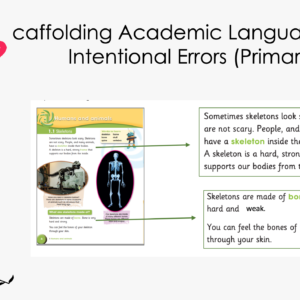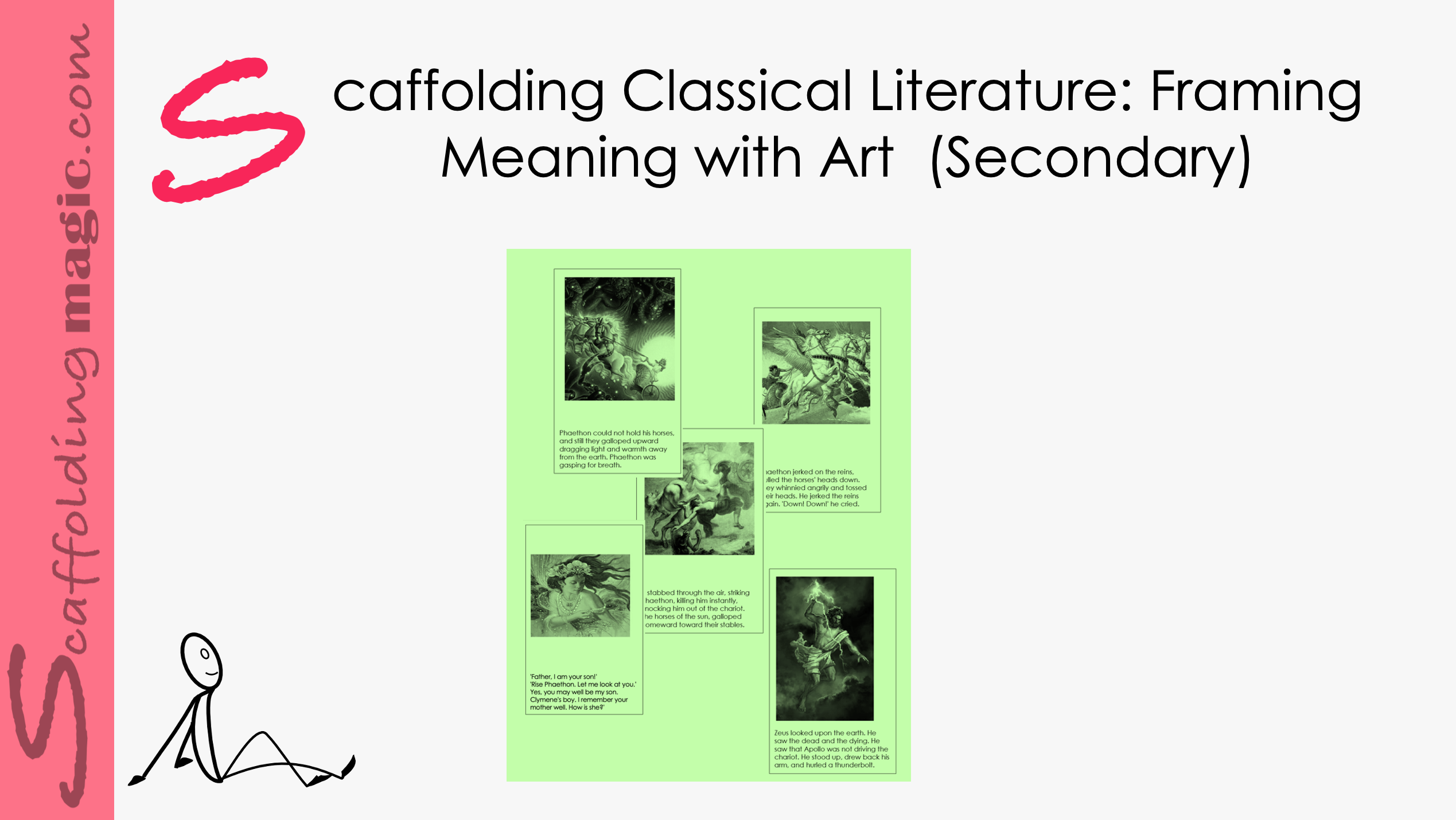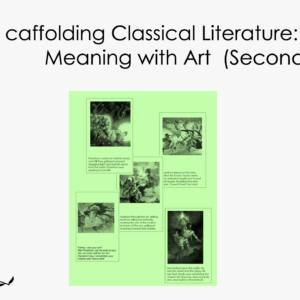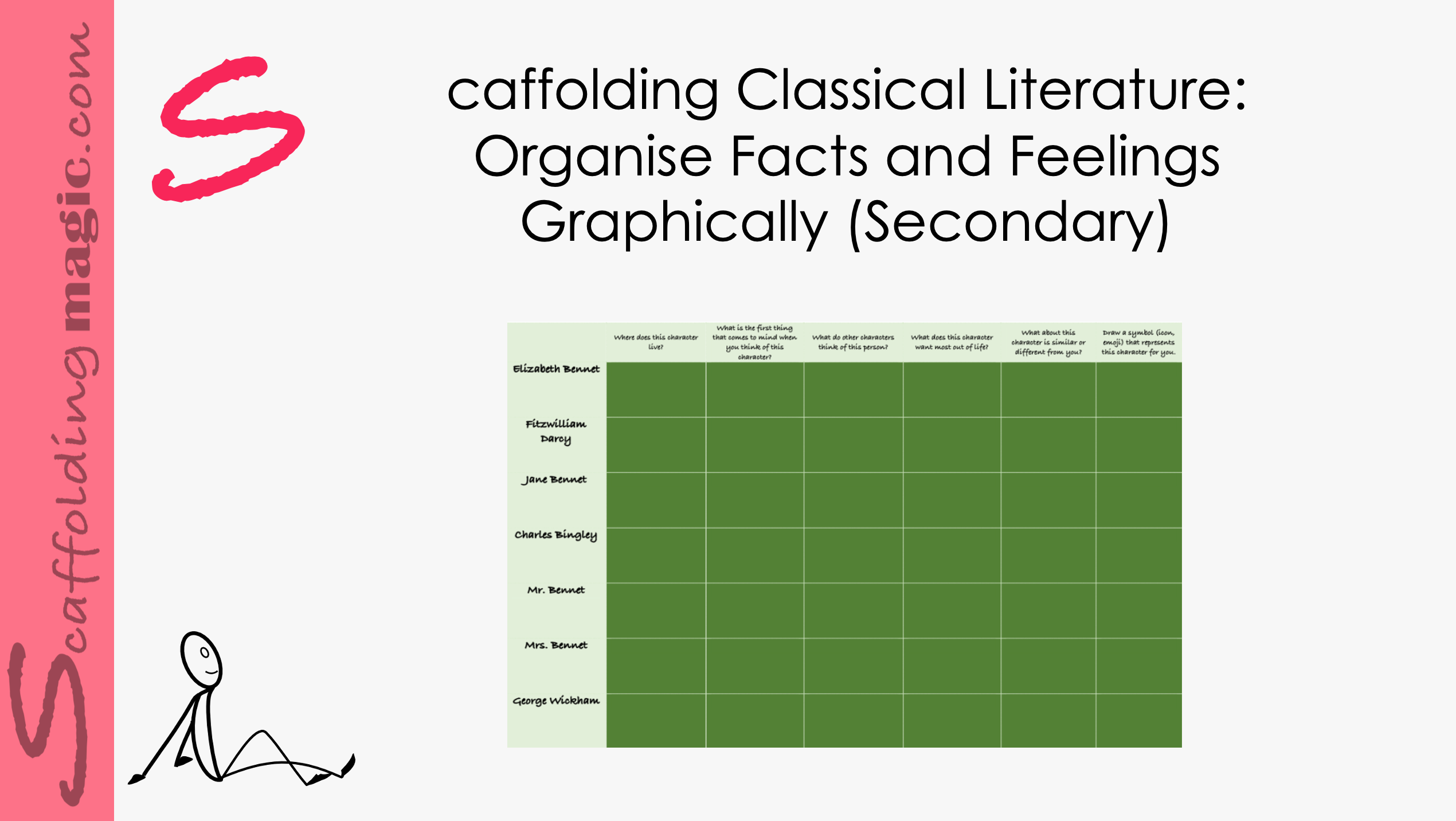Shop
Showing 1–12 of 57 results
- Scaffold
- dynamic activity
- student-centred
- written instructions
- variety of learning styles
- an introduction to the academic language, concept and/or content of the
- Body of Lesson
- whatever you provide (we’ll offer suggestions if necessary)
- Formative Assessment
- a creative way to evaluate if your students have assimilated the new information
- Reflection Questions
- questions based on lower-to-higher level questions to promote critical thinking
- External Resources
- PDF Format
- Templates
- Quick View
- Quick View
-
Higher Education ScaffoldsQuick View
Scaffolding Academic Language – through errors (higher education)
$5.00 Add to cart -
Higher Education ScaffoldsQuick View
Scaffolding Academic Language by Identifying Visual Differences (Higher Education)
$5.00 Add to cart -
Primary ScaffoldsQuick View
Scaffolding Academic Language by Identifying Visual Differences (Primary)
$5.00 Add to cart -
Secondary ScaffoldsQuick View
Scaffolding Academic Language by Identifying Visual Differences (Secondary)
$5.00 Add to cart -
Higher Education ScaffoldsQuick View
Scaffolding Academic Language with ‘What’s Missing?’ (Higher Education)
$5.00 Add to cart -
Primary ScaffoldsQuick View
Scaffolding Academic Language with ‘What’s Missing?’ (Pre-School/Lower Primary)
$5.00 Add to cart -
Pre-School/Lower Primary ScaffodsQuick View
Scaffolding Academic Language with Hieroglyphs (Pre-School/lower primary)
$5.00 Add to cart - Quick View
-
Secondary ScaffoldsQuick View
Scaffolding Activity for Classic Literature 2: Framing Meaning with Art
$5.00 Add to cart -
Secondary ScaffoldsQuick View
Scaffolding Activity for Classic Literature 4: Organise Facts and Feelings Graphically
$5.00 Add to cart
customised mini-lesson
Send me a message at donna@scaffoldingmagic.com and we’ll begin creating you’re incredible Mini-Lesson that will include:
Get ready to revel in the engagement of your students!!
Janice’s new product for testing
Now on to the short description with a pdf added to the product gallery
I want to see how this will show up, so I’ve added a new product to play with.
How do the images appear, etc.
Scaffolding Academic Language – through errors (higher education)
The brain sparks and grows when we make mistakes – even if we are not aware of it – because it is a time of struggle; the brain is challenged, and so this is when it grows the most.* Errors need to be celebrated in our classroom; we need to help our students to embrace the effort they make in their studies and focus on mistakes and successes alike, and not only the outcomes.
The brain sparks and grows when we make mistakes – even if we are not aware of it – because it is a time of struggle; the brain is challenged, and so this is when it grows the most.* Errors need to be celebrated in our classroom; we need to help our students to embrace the effort they make in their studies and focus on mistakes and successes alike, and not only the outcomes.
Scaffolding Academic Language by Identifying Visual Differences (Higher Education)
Creating opportunities for our students to use academic terms and phrases while analysing, comparing, categorising, and defending their own ideas, triggered by the search for visual differences in an educational resource you’ve manipulated.
Creating opportunities for our students to use academic terms and phrases while analysing, comparing, categorising, and defending their own ideas, triggered by the search for visual differences in an educational resource you’ve manipulated.
Scaffolding Academic Language by Identifying Visual Differences (Primary)
Studies show that while memorising academic language is effective in the short term – to pass exams, for instance, in the long-term it is an ineffective way of learning terms that students can use in context*. Without having analysed, compared, categorised, and defended their own ideas through the use of these terms, most students will forget their meanings as quickly as they learned them.
What can we do? The solution is easy. We create opportunities for our students to analyse, compare, categorise, and defend their own ideas through the use of these terms.
Scaffolding Academic Language by Identifying Visual Differences (Secondary)
Studies show that memorising academic language is ineffective in the long-term*. Students may be able to pass an exam they are studying for, but without having used the terms to analyse, compare, categorise, and defend their own ideas, most students will forget the meanings of the words as quickly as they learned them.
The solution is easy. We create opportunities for our students to use these words, terms and phrases while analysing, comparing, categorising, and defending their own ideas.
Studies show that memorising academic language is ineffective in the long-term*. Students may be able to pass an exam they are studying for, but without having used the terms to analyse, compare, categorise, and defend their own ideas, most students will forget the meanings of the words as quickly as they learned them.
The solution is easy. We create opportunities for our students to use these words, terms and phrases while analysing, comparing, categorising, and defending their own ideas.
Scaffolding Academic Language with ‘What’s Missing?’ (Higher Education)
This scaffold address the importance of academic language, which is so important that experts assert that the warehouse of words a person has stored away is directly connected to their quality of thinking: higher quality of words equals higher quality of thinking.** In this age of the Fourth Industrial Revolution, the quality of thinking our students reach in our classes, will be the difference between being qualified for jobs that technology is (still) not capable of performing, and watching the world from the sidelines.
This scaffold address the importance of academic language, which is so important that experts assert that the warehouse of words a person has stored away is directly connected to their quality of thinking: higher quality of words equals higher quality of thinking.** In this age of the Fourth Industrial Revolution, the quality of thinking our students reach in our classes, will be the difference between being qualified for jobs that technology is (still) not capable of performing, and watching the world from the sidelines.
Scaffolding Academic Language with ‘What’s Missing?’ (Pre-School/Lower Primary)
Academic language is so important that experts assert that the warehouse of words a person has stored away is directly connected to their quality of thinking: higher quality of words equals higher quality of thinking.** In this age of the Fourth Industrial Revolution, the quality of thinking our students reach in our classes, will be the difference between being qualified for jobs that technology is (still) not capable of performing, and watching the world from the sidelines.
This applies even to our youngest learners. We can help them to assimilate academic language even before they begin to read. If we verbalise first-, second- and third-tier words,*** through dynamic activities, we are helping them to become familiar with academic language that will serve them for the rest of their academic and professional lives.
Academic language is so important that experts assert that the warehouse of words a person has stored away is directly connected to their quality of thinking: higher quality of words equals higher quality of thinking.** In this age of the Fourth Industrial Revolution, the quality of thinking our students reach in our classes, will be the difference between being qualified for jobs that technology is (still) not capable of performing, and watching the world from the sidelines.
This applies even to our youngest learners. We can help them to assimilate academic language even before they begin to read. If we verbalise first-, second- and third-tier words,*** through dynamic activities, we are helping them to become familiar with academic language that will serve them for the rest of their academic and professional lives.
Scaffolding Academic Language with Hieroglyphs (Pre-School/lower primary)
Educators and owners of academies who claim to teach critical thinking usually assume that it is a skill, like riding a bicycle, and that, like other skills, once you learn it, you can apply it in any situation. This has, in fact, not proven to be true. The process of thinking is intertwined with the content of thought – that is, domain knowledge. This is crucial in designing lessons that include critical thinking activities. It makes no sense to try to teach critical thinking devoid of factual content.* The trick, then, is to teach our students as many techniques as possible so that they have a toolbox of critical thinking skills that they can access in different context and the better and more efficient thinkers they will be in a wider context, even at the youngest ages.
Educators and owners of academies who claim to teach critical thinking usually assume that it is a skill, like riding a bicycle, and that, like other skills, once you learn it, you can apply it in any situation. This has, in fact, not proven to be true. The process of thinking is intertwined with the content of thought – that is, domain knowledge. This is crucial in designing lessons that include critical thinking activities. It makes no sense to try to teach critical thinking devoid of factual content.* The trick, then, is to teach our students as many techniques as possible so that they have a toolbox of critical thinking skills that they can access in different context and the better and more efficient thinkers they will be in a wider context, even at the youngest ages.
Scaffolding Academic Language with Intentional Errors (Primary)
This scaffold puts a twist on the concept of celebrating mistakes. To truly show our students how errors are valuable for their own development, we create a whole activity around mistakes that we have intentionally embedded in the unit, lesson, or project they are about to begin. At the end of the activity, we further expand the dynamic by helping them to reflect on the steps of the activity – how they felt having the opportunity to consider different alternatives instead of receiving the information without any opportunity to collaborate or participate. Essentially, they’ll be reflecting on how it feels to learn through an action!
Scaffolding Activity for Classic Literature 2: Framing Meaning with Art
Students are given artistic renditions of the story by documented artists with captions underneath in authentic language. They put the images in order according to what makes sense to them with regard to images and language. In the best practices of the Ethic of Excellence, in groups, they then exchange their artwork and analyse each other’s renditions.
Students are given artistic renditions of the story by documented artists with captions underneath in authentic language. They put the images in order according to what makes sense to them with regard to images and language. In the best practices of the Ethic of Excellence, in groups, they then exchange their artwork and analyse each other’s renditions.
Scaffolding Activity for Classic Literature 4: Organise Facts and Feelings Graphically
Here is a scaffold that will help your students keep track of the many characters in the story. Aside from the facts and family trees which can help enormously in following the plot, the graph encourages the students to pay attention to personalities and actions so they can make connections to them and people in their own lives – a key in engaging our students.
Here is a scaffold that will help your students keep track of the many characters in the story. Aside from the facts and family trees which can help enormously in following the plot, the graph encourages the students to pay attention to personalities and actions so they can make connections to them and people in their own lives – a key in engaging our students.

